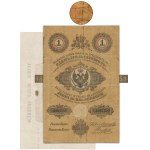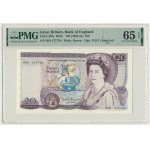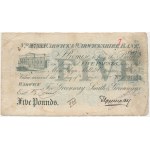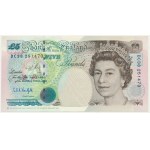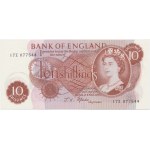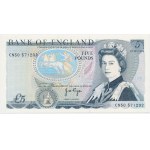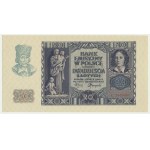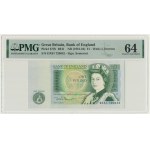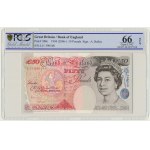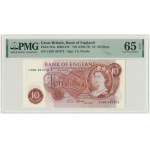The banknote on offer is the absolute extreme of rarity when it comes to the combination of banknote rarity, variety and unique state of preservation.
Typologically, the presented denomination is one of the rarest Polish banknotes of the 20th century. This coin not infrequently finds its way into advanced collections in agonizing states of preservation, as nice ones are extremely hard to come by.
The variant of the bill with a dot separating the letters of the series is unquestionably the rarest of all three isolated in the catalog by Czeslaw Miłczak. The B.W. series is previously unrecorded in the literature. It should be emphasized that the offered variety (c) is, in our opinion, many times rarer than the others. We have offered this variety only once in our previous activity. It is undeniably one of the rarest varieties within 20th century Polish banknotes.
Equal attention should be paid to the state of preservation. This denomination, regardless of the variety, appears sporadically, and the available pieces are banknotes that have been heavily worn by circulation and often heavily experienced by conservation. Pieces with a completely illegible and worn-out numerator, whose legibility quickly faded with circulation, are therefore not surprising.
The banknote which is the subject of the auction is undisputedly one of the best pieces to have appeared at auction in Poland. An impossibly circulated piece, with a few breaks and deflections in the field, but no tears or rubbing on the humps. Colors superbly saturated. The original paper texture is perfectly preserved throughout the banknote. The surface of the paper bears only local minor soiling, hence the overall presentation for this class of currency can be confidently described as beautiful.
A first-class value - a true pearl of Polish notafilasty. Pieces of this rare variety appear on the market extremely sporadically, and the opportunity to acquire a piece with such excellent preservation may not be repeated for many years. It is worth fighting for!
In 1924, alongside Bank of Poland banknotes, pass tickets came into circulation. Unlike paper money, the coins were issued for the account of the Treasury. As the amount of coinage accumulated in the treasury was insufficient, it was decided to issue pass tickets to temporarily replace coins. The paper money issued by the Treasury was to help exchange Polish marks for zlotys by providing the public with the lower denominations necessary for everyday transactions.
In the second half of the 1920s, the Treasury Ministry introduced a paper two-zloty and two types of five-zloty coins still in circulation. The issuance of perfunctory paper money was linked to the country's economic recession in 1924 and 1925. In 1927 the government introduced a stabilization plan. It was then decided to redeem the perfunctory tickets in circulation. This was done by exchanging them half for Bank of Poland bills and half for bullion money. From then on, only paper money of the Bank of Poland was in circulation.
In the second half of the 1920s, the first issues of domestically designed and printed banknotes - 10 zlotys 1926, 20 zlotys 1926 and 50 zlotys 1925 - were put into circulation. The separation in their graphic design of a white margin intended for a watermark permanently inscribed the appearance of Polish paper money used to this day.








